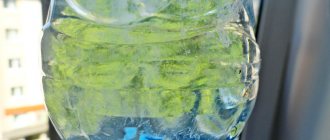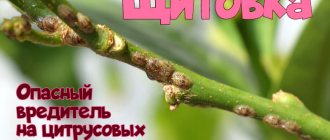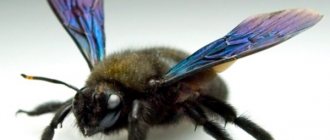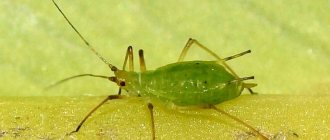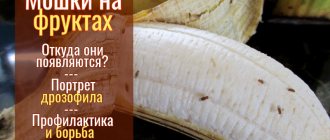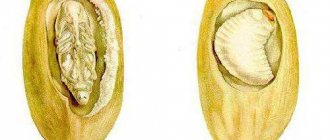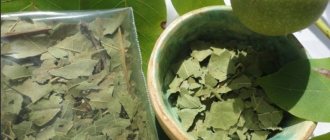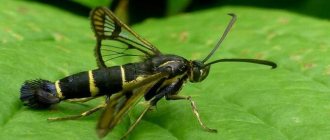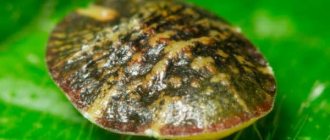Aphids are a widespread insect pest that does not touch berries, but severely damages shoots and leaves on currant bushes. If you leave everything to chance, the plant weakens, often gets sick, and then you don’t even have to think about a good harvest.
There are no varieties of currants resistant to the pest. Therefore, at the first sign of the appearance of insects, you need to take effective measures. Today you will learn how to fight aphids on currants: with folk remedies or chemicals, what preventive measures will help reduce the likelihood or completely prevent the appearance of dangerous pests.
- Why are aphids dangerous?
- What aphid attacks currants: types and signs of damage to the bush Gall aphid (leaf)
- Gooseberry aphid (shoot)
- Soda Ash
Why are aphids dangerous?
Aphids feed on the sap of leaves, shoots and flower buds of red and black currants, causing deformation, curling and wilting. It is a carrier of viral diseases such as:
- necrotic yellowness;
- mosaic viruses types I and II;
- terryness.
The honeydew produced by the pest attracts ants to the garden and leads to the appearance of black fungus.
Aphids overwinter on currant shoots in the egg stage, which are laid at the base of the buds. The first insects appear in early spring. Colonies form on shoots and leaves. Later, a winged form develops and leaves the plants for the summer. In the fall, the aphids return and lay winter eggs.
How can you treat currant bushes after harvesting?
If there are gall aphids on a plant with berries, treatment must be carried out only using traditional methods. When aphids first appear, the entire crop should be harvested and only then treated with chemicals.
To avoid infection with currant aphids, it is necessary to prevent its occurrence.
Among the measures, a special place is occupied by “scarers”:
- marigold;
- mint;
- coriander and so on.
Repellent plants have a strong odor that insects do not like.
It is important to follow all preventive measures and carefully care for all plants in your summer cottage.
Typical mistakes gardeners make when growing currants:
- some gardeners do not pay attention to the presence of ants on currants affected by aphids. It is impossible to get rid of the pest unless you eliminate the ants that transport aphids to the plants;
- When carrying out top spraying of the crown, it is not possible to touch aphids, which tend to hide on the underside of the leaves. When processing, the solution must be sprayed from all sides, lifting each branch;
- A bad decision is to schedule spraying with protective equipment without taking into account the weather forecast. Possible rain or even hail can reduce all efforts made to zero results.
Natalia
Author
Ask a Question
The gall aphid is a dangerous and fairly common pest that affects the entire currant bush at once. In gardening, it is necessary to recognize the presence of a disease on a plant in time and respond to it immediately. By following all the tips described, every gardener will be able to rid currants of the parasite and achieve a bountiful and tasty harvest.
What aphid attacks currants: types and signs of damage to the bush
As a rule, the peak activity of aphids occurs in May-June, although the pest does not sleep during the summer, actively reproducing and populating the entire garden with its offspring.
The life cycle of aphids is as follows: in early spring, when the temperature rises, insects emerge from the laid eggs and begin to multiply quickly, feeding on plant juices. Malicious pests (wingless form) suck them out (the juices) with the help of their proboscis, piercing the youngest and most tender leaves, shoots and buds. When there are too many aphids and the plant dries out, a generation of a winged form is born, the individuals of which scatter to neighboring bushes. In autumn, eggs are laid in favorite places.
Typically, damage such as swollen, curled, and then reddened currant and gooseberry leaves with accumulations of larvae on the inside of young leaves indicates that a small and dangerous pest - aphids - has settled in your area.
Most often, currants are affected by two varieties of aphids, each of which prefers its own color of the berry: gall - red and white, and gooseberry - black.
Aphids and ants are good friends (faithful companions), since the latter love to feed on the carbohydrate secretions (molasses) of our small pests, carrying them from one place to another. So fighting aphids is also fighting ants.
Gall aphid (leaf)
If characteristic red spots in the form of swellings appear on red or white currants (these bubbles do not immediately acquire color), this means that your berry bush has been attacked by gall aphids.
As a rule, it hides precisely on the back side of the leaves and is very difficult to see, since it is even smaller than the melon, which attacks cucumbers (less than 2 mm).
If you do not detect it in time and take appropriate measures, the leaves will gradually die off. Then, naturally, the yield will drop significantly, and the bush itself will begin to slowly die.
Gooseberry aphid (shoot)
You can detect that your blackcurrant has been attacked by gooseberry aphids by looking at the curled leaves on the tops of the shoots (similar to a cocoon).
Leaves twisted into cocoons are very convenient for aphids for their own protection, because predator insects cannot see them.
If you unfold these leaves, you will see a huge number of aphids and their eternal companions, or rather defenders and carriers - ants.
Because of this, the fruits of the bush begin to shrink, they lose their taste, and they may even begin to fall off spontaneously.
Prevention of infection
To prevent aphids from attacking your plantings and protect your currants, think about prevention long before they appear. Following simple principles and control measures will help with this:
- Weed control. Overgrown bushes are much more likely to be affected by pests, so the area around the currants should always be thoroughly weeded. The only exceptions may be repellent plants.
- Timely pruning of bushes will also help protect currants. Aphids breed on branches hidden from the sun and poorly ventilated. You can prevent its comfortable reproduction with the help of annual sanitary and formative pruning: dead branches and excess weak shoots hidden in the depths of the bush are eliminated.
- Destruction of ants. Black ants will ruin all your attempts to remove aphids. They carry it on themselves from neighboring areas, populating more and more new bushes. Therefore, black ants must be fought tirelessly until they are completely destroyed.
The key to success in the fight against aphids is methodicality. By noticing the appearance of pests in time, you can avoid infection of all plantings. It is impossible to completely get rid of aphids on red or black currants. However, compliance with preventive measures and a competent combination of control methods will help avoid significant damage to the crop and maintain the health of the bushes.
Traditional methods of fighting aphids
It is recommended to fight aphids on currants with folk remedies in case of moderate pest infestation. If the ecological recipe is used correctly, there will be no need for chemicals on the site. Practice-proven methods are based on pollinating bushes with herbal powders or spraying plantings with solutions.
Protecting berry fields with natural compounds involves several stages of using the chosen method. A slight violation of the frequency, timing and recipe - and the aphids return.
Soda Ash
The mixture is prepared from 10 tbsp. l. soda and 10 liters of water. The powder should completely dissolve. Before spraying, add a little soap solution to the product.
Hydrogen peroxide
Mix 50 ml of hydrogen peroxide, 50 ml of alcohol and 10 liters of distilled water. Spray on the undersides of leaves of infected plants. Use once a week (preferably after rain).
Using tobacco against aphids
The simplest treatment of currants against a dangerous pest is spraying with tobacco dust. Used as prophylaxis in early spring. The product is effective against gall aphids.
If the pest is found on a bush at the beginning of the growing season, a liquid concentrate is prepared from tobacco. 100 g of dust is dissolved in 1 liter of warm water, add 50 g of laundry soap. The composition is brought to a boil in a water bath and removed from the stove. 300 g of broth is dissolved in a 10-liter bucket and the bush is sprayed with the working solution. Treatment of currants is repeated 3 times at intervals of 2-3 days.
Ammonia
Ammonia (ammonia) is a nitrogenous compound that is suitable for killing aphids, and will also be useful for the plant itself for growth and development. You need to make the following composition: combine 100 g of laundry soap, 50 ml of ammonia, 10 liters of water. Mix thoroughly and spray the aphids on the currants. This product is used in the first half of summer, when plants require nitrogen for active growth.
All homemade folk remedies have one drawback: they have a “mild” effect on insect pests without causing harm to plants. Such methods are used for prevention or at the first signs of infection, when a colony of aphids has just appeared on currants.
Soap, added to different compositions, serves as a kind of glue. It helps other substances linger on the lower parts of the leaf blades. Berry bushes are sprayed several times during the growing season, repeating the procedure after 7–10 days. For an adult currant bush, approximately 1.2-1.5 liters of the prepared preparation are usually consumed. It is better to fight aphids on currants using folk remedies in the evening, when the weather is calm and windless. Treatments are not recommended during the flowering period and a few days before harvest. Otherwise, pungent-smelling herbal and drug compounds may be present in the taste and smell of currants.
Infusion of marigolds
The infusion effectively fights gall aphids. To obtain the product, pour half a bucket of crushed flowers and green mass of the plant with 10 liters of water. Leave for 3 days, filter the prepared solution through gauze.
Mustard infusion
To get rid of aphids on currants, an infusion is prepared from mustard powder. 15 g (1 tablespoon) of raw materials are diluted in 1 liter of water and kept in a warm place for 2 days. Before use, the volume is adjusted to 5 liters. If the pest has tightly adhered to the currants, the proportion of the infusion is 1 liter per 20 g of powder. This composition will also poison the leaf roller butterfly, which is often adjacent to aphids.
Pine infusion
A kilogram of pine needles (preferably pine) is poured with 5 liters of boiling water and left for 7 days. For preventive use, the concentrate is diluted to 10 liters; in case of a massive aphid infestation, problematic currant bushes are sprayed with a concentrated infusion. After treating the bushes with a diluted product (ratio 1:5), the soil under the currant plantings is treated.
Onion peel infusion
Onion infusion is a lifesaver if you need a quick and guaranteed effect. It helps well against gall or gooseberry aphids, and can be used during the fruiting period of currants. In addition to getting rid of pests, it saturates berry plants with useful substances.
To prepare, take 200 g of husk and place it in a zinc bucket, then pour 10 liters of boiling water. They form a “bath” - place a large pan on top of the bucket with the solution and wrap it well. Leave for 10-15 hours. Infected currant bushes are sprayed with undiluted infusion.
Infusion of potato or tomato tops
An infusion of tops of nightshade crops (primarily potatoes and tomatoes) removes all types of aphids. It is also an excellent help against codling moths, sawflies and mites. The harmful effect of the infusion is given by toxic salonin in the composition of potato and tomato tops.
4-5 kg of green mass are poured into 10 liters of water and simmered over low heat for 30-40 minutes. Soap is added after cooling. Before spraying, the concentrate is diluted with water in a ratio of 1:5.
Ash infusion with wormwood
The infusion is quickly prepared, and therefore good for urban summer residents. Dosage: 500 g of wormwood, 300 g of wood ash and 50 g of soap. The ingredients are poured into 10 liters of water and left for 5 hours. After filtering, the solution is diluted halfway with water.
Infusion of celandine
If there is any doubt about the type of pest, celandine will help. The ubiquitous weed effectively exterminates both gall and gooseberry aphids. However, such an infusion should not be used when fruit ovaries appear on currants.
Pour 3-4 kg of freshly cut grass into a 10-liter bucket and leave for 12-15 hours. Be sure to strain the finished infusion before spraying.
Soap solution
In everyday life, by soap solution, gardeners mean any alkaline composition. To obtain the drug, add 3-4 tbsp to 1 liter of water. spoons of dishwashing detergent, washing powders, liquid or grated laundry soap. Tar soap gives a good result in case of severe damage to plantings. A 100-gram piece is dissolved in 10 liters of water and sprayed onto the plantings. The pungent smell of tar repels pests.
Another effective remedy is a soap-soda solution. Dissolve a piece of laundry soap in 4-5 liters of hot water and add 4 tbsp. spoons of soda ash. In the absence of rain, treatment for 2-3 weeks prevents the appearance of aphids.
Fumigation of currant bushes
Close to the currant plantings they burn objects that do not so much burn as smolder. These are rubber, caoutchouc, tobacco, raincoat mushroom. Plumes of acrid smoke destroy ripening eggs and colonies of aphids, the smell of burning and ash residues repel new pests.
Fumigation of currants is carried out on a cloudy day in calm weather. A piece of suitable material is placed in a pan or flask and set on fire. To prevent active combustion, cover the container 2/3 with a lid. The “device” is placed under the currant bushes for 2-3 hours.
Milk and iodine
The composition helps to get rid of any type of aphids on currants. A liter of cow's milk is diluted with 10 liters of water, then 5 ml (1 teaspoon) of iodine is added to the mixture. Soap is not used: milk fat acts as a protective film. It is important to observe the dosage of iodine, otherwise you can burn the currant foliage. Milk can be replaced with whey. In this case, 50 g of birch tar soap is added to the ingredients.
Iodine-milk treatment is a good leaf-based fertilizer. The mixture contains amino acids, calcium and phosphorus. During the season, the treatment against aphids is repeated 3-4 times, and in the fall the currant harvest will delight you with large juicy berries of a rich color.
Conclusion
- Aphids are a very harmful insect for currants, destroying young leaves and shoots of the plant, reducing yield.
- You can fight aphids with folk remedies, which are destructive to insects, but harmless to humans.
- The choice of folk recipes against aphids depends on the growing season of the plant. When pouring and ripening berries, you need to avoid products that have a strong smell and taste.
- The bushes should be treated either early in the morning or late in the evening to prevent the leaves from getting sunburn.
- Treatments after flowering do not protect currants forever. Depending on the chosen method, they will have to be repeated from 10-15 to 2-3 times a month.
Chemicals
They are used with caution. Chemical sprays can be harmful to human and animal health. Today's market recommends the following products:
- Aktara. Fast acting due to good absorption by plants.
- Actellik. Organophosphate insecticide. More toxic than other drugs. Increased security measures are required.
- Fufanon. Effectively fights against herbivorous parasites.
- Alioth. Penetrating into plants, it affects insects upon contact with the outer shells, entering the intestines and inhaling vapors.
- Biotlin. Aphids and their larvae die within a few hours after treatment. The protective effect lasts 14-21 days.
- Inta-vir. The drug is safe for people and animals. Leads to paralysis of pests.
- Karbofos. Acts against sucking and leaf-eating parasites. Moderately toxic.
- Kinmiks. Paralyzes the nervous system of adult aphids and larvae.
- Tanrek. Penetrates into leaves, stems and roots of currants.
Plants against aphids on currants
Currants grow in one place for decades, and crop rotation cannot be applied to a berry garden. Repellent plants planted around the bushes will help out. They will protect currants from aphids during the period of berry ripening, when it is impossible to treat them with chemicals.
Planted nearby:
- marigold;
- calendula;
- lavender;
- mint;
- garlic;
- coriander;
- sage.
These plants abundantly distribute fragrant essential oils around, which protects the currants. The “fragrant” curtain physically prevents aphid nests from appearing.
When and how to treat?
When fighting aphids, the following rules are observed:
- when using an agricultural product for the first time, you need to try it on a small area;
- if the drug is too strong, the effect will appear within twenty-four hours;
- use chemicals strictly according to instructions;
- do not spray during the flowering period;
- do not process plantings in rainy and windy weather;
- spray not only the bushes, but also the ground underneath them.
Which varieties are resistant to the disease?
To combat various diseases, plants have to be treated with various drugs, which is tiring and harmful to health.
Therefore, there are a number of currant varieties that are resistant to most pests:
Sticky, Selechinskaya-2, Zest, Exotic, Dubrovskaya, Vigorous, Binar, Summer resident, Ilya Muromets, Temptation, Kupalinka, Charm, Titania, Ceres, Sunderbyn-2, Kipiana, Elegant, Katyusha, Mermaid, Perun
When planting, it is preferable to choose resistant currant varieties.
Preventive measures
As a preventive measure they practice:
- regular inspection of leaves;
- use of fertilizers with low nitrogen content;
- thorough weeding and mulching;
- fighting ants;
- pruning dry branches and removing old bark;
- loosening the soil and whitewashing the trunks in the fall.
To destroy aphids, you must use all available means. Modern technologies will help save time and effort. Home methods will eliminate any harmful effects on the future harvest.
